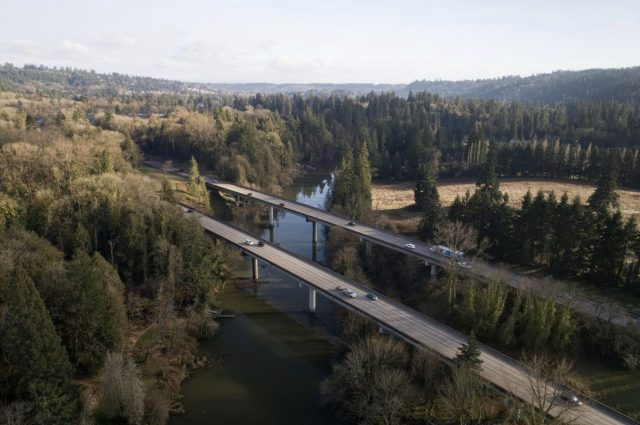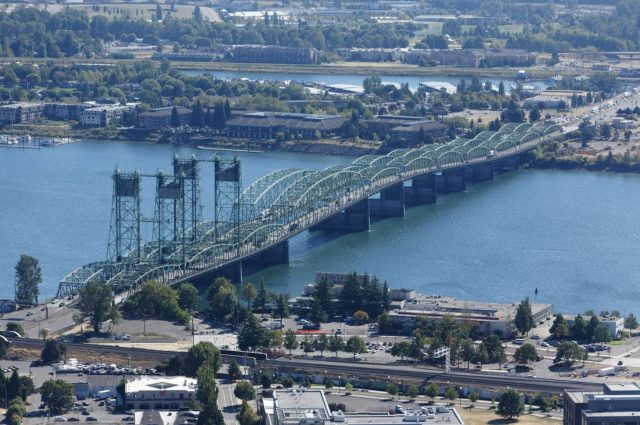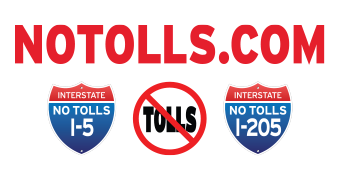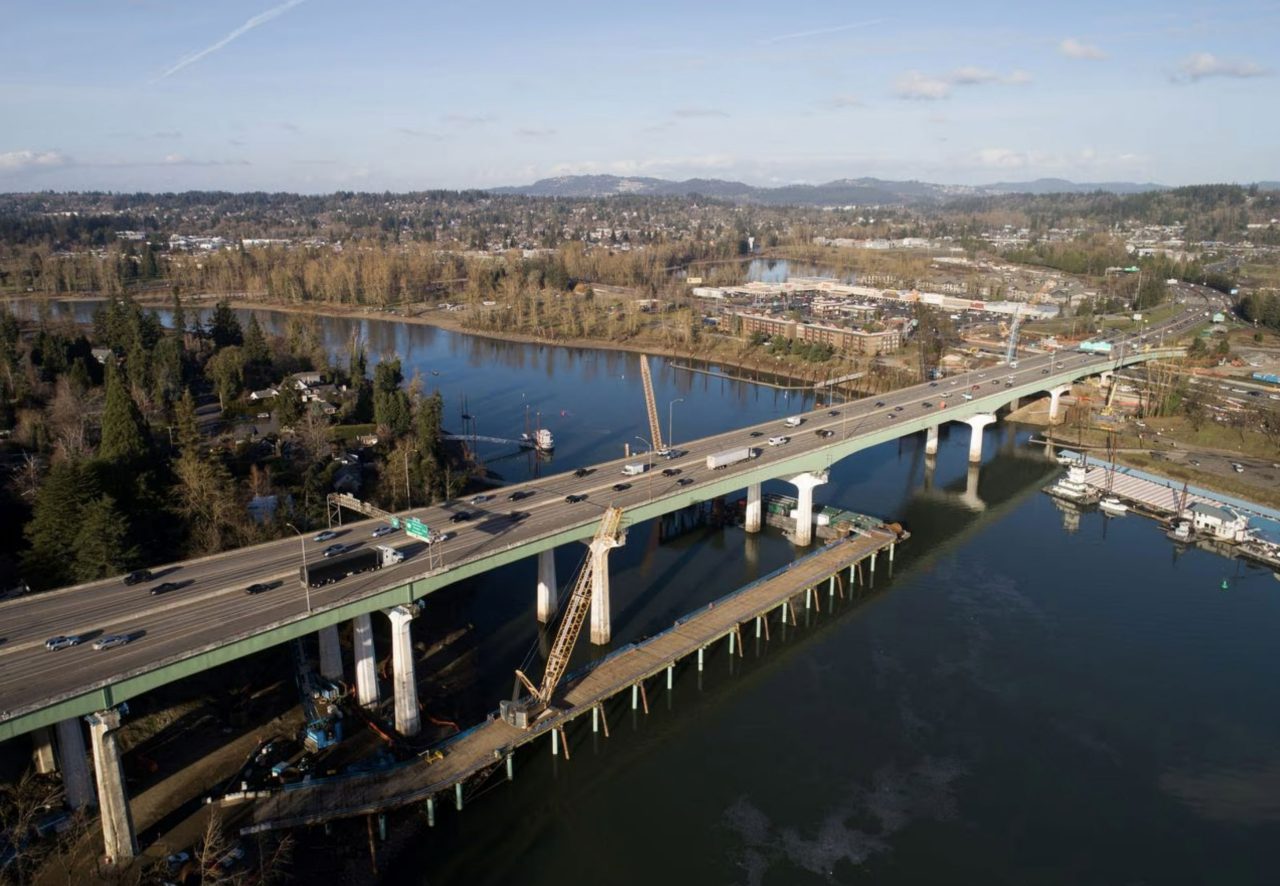In less than two years, the Oregon Department of Transportation will introduce the first highway tolls in the state.
It will begin with two bridge tolls on Interstate 205. But planned within the next few years are per-mile tolls on all lanes of Interstates 5 and 205 and, if a replacement project gets underway, a toll to cross the Interstate Bridge over the Columbia River.
Freeway tolling has been all but guaranteed in Oregon since 2017, when the Oregon Legislature directed ODOT to develop a pricing system to manage highway congestion.
But as that system takes shape, even some community members and activists who support tolling as a way to manage traffic say the quickly mounting potential costs could put undue financial strain on commuters, particularly low-income drivers and communities of color.
Joe Cortright, an economist and frequent ODOT critic, said the state agency’s fragmented approach to the projects doesn’t give commuters the full picture of how much costs could stack up.
“The way you need to approach this is not piecemeal,” Cortright said. “When you add these together, you get something that doesn’t make a lot of sense.”
The toll programs that have emerged will not only try to nudge commuters to off-peak hours, but also help pay for big freeway projects. Tolling has been a controversial part of discussions for a replacement Interstate Bridge for years, and the Interstate 205 bridge tolls will help pay for an ongoing revamp of the freeway.
ODOT also sees tolls as a way to support its sagging road maintenance budget as the agency’s primary source of revenue, the state gas tax, dwindles due to an increase in more efficient and gas-free electric vehicles.
Cortright and other climate activists are urging the state to toll for traffic management, but not to fund freeway expansion projects or to bolster the agency’s budget. They’re joined by social justice groups who say ODOT’s approach will fall hardest on marginalized groups.
Indi Namkoong, the transportation justice coordinator for the environmental nonprofit Verde, said congestion pricing can be an effective tool for improving travel and reducing pollution. But she said ODOT’s current plans give only a passing nod to mitigating the cost burden and pollution.
“As we are asking folks to contribute and stretch their wallets a little bit further, we should be thinking, is it clear to people what benefit it’s going to bring them?” Namkoong said “Not just a little faster commute, but are they going to build something that works for my community, my needs?”
The state Legislature in 2021 passed a bill requiring ODOT to study income-based rates before it begins tolling, reducing the burden to low-income drivers. The agency is considering a discount or credit for qualifying motorists, said Mandy Putney, who oversees ODOT’s tolling projects.
And ODOT spokesperson Kevin Glenn said the agency’s projects, including those paid for in part with tolls, should be viewed not just as freeway expansions but also as critical safety projects.
“The Rose Quarter is a very scary place to merge,” he said. “The nine bridges on I-205 are still earthquake unready. Same with the Interstate Bridge. So we feel there’s still independent utility in the projects themselves in addition to managing and reducing congestion.”
Tolling costs remain unclear. The transportation department says none are set in stone and all will be set by the agency’s oversight group, the Oregon Transportation Commission, whose members are appointed by the governor.
That’s part of the problem, says Cortright: The state is committing to tolling for capital projects without a clear sense of need or how much the tolls will generate, and without saying how much it will cost commuters.
Piecing together public records and disparate numbers ODOT has released over the last few years, Cortright concluded that tolls on either an I-5 or I-205 route could pile up to as much as $30 for a hypothetical round-trip commute between Wilsonville and Vancouver during peak hours — when tolling rates would be at their highest to discourage congestion.
ODOT disputes Cortright’s estimate. Glenn said the agency has not settled on prices for any of its tolling projects and that some of the numbers Cortright relied upon were purely hypothetical.

The first tolls, at the Abernethy and Tualatin River bridges on Interstate 205 in Clackamas County, are expected to take effect next December. The money will pay for an expansion of the freeways at the bridges, long viewed as a bottleneck that caused traffic jams, as well as seismic reinforcement of those bridges and seven others.
Travis Brouwer, ODOT’s financial director, said the agency expects to raise between $500 million and $800 million in toll revenue to cover the cost of the freeway project.
How that will fall on daily drivers, Brouwer said, has not been determined. But ODOT said in December that tolls for the Abernethy and Tualatin River bridges will be $2.20 per bridge during the busiest weekday hours.
The next major tolling project would be the Regional Mobility Pricing Project, which would impose per-mile tolls on all lanes of interstates 5 and 205 in the Portland metro area as soon as 2025. The tolls would vary by time of day with the goal of reducing congestion, particularly during rush hours.
In 2018, ODOT estimated those rates could be between 17 and 38 cents per mile at peak hours. But Glenn, the ODOT spokesperson, said the actual numbers could be different.
“The Regional Mobility Pricing project is at an early enough stage that making assumptions on a per-mile rate may not accurately suggest how the program will be set up,” he said.
It remains unclear if there would be any toll-free hours.

Oregon and Washington’s state transportation agencies also plan to impose tolls across a replacement Interstate Bridge, to reduce congestion and pay for the new I-5 span over the Columbia River.
The proposed bridge replacement would include seismic upgrades to the spans across the Columbia River, and an extra lane in each direction. Construction on the bridge wouldn’t begin until at least 2025 and is contingent on the bridge planners coming up with up to $3 billion more than previously expected to fund the bridge.
Cortright, using numbers he requested from the bridge planners, estimated that costs for the bridge toll at peak hours could be as high as $5.60 per crossing.
Greg Johnson, the director of the Interstate Bridge Replacement program, said toll rates that have been analyzed for the Interstate Bridge so far have been for study purposes and aren’t final. He said for the previous bridge project — which failed in 2014 before construction started — planners studied toll rates between $2 and $4.
LOW INCOME DRIVERS
Under laws passed by the Oregon Legislature in 2021, tolling plans must scale based on income.
ODOT’s preliminary plan would reduce prices for drivers based on household income relative to the federal poverty line.
Using today’s poverty level, ODOT would discount tolls for a two-person household making $73,240 or less or a four-person household making $111,000 or less — four times the poverty line. Households closer to the poverty line would get a larger discount.
The agency is still figuring out how much of a discount those commuters would get, and how to get the technology that would enable the discounts into the hands of commuters who could face obstacles in signing up for the program.
Transportation justice advocates say that while ODOT’s efforts are a good step, tying tolls to big freeway projects and expansions is inherently inequitable.
Namkoong said she hopes to see the lowest possible rates for drivers and that some of the revenue should go to building more non-car options for commuters, such as adding sidewalks and making streets safer for pedestrians and cyclists.
“As we’re setting prices, we should make sure we’re taking into account that it’s a networked system and not a set of discrete chunks of highway,” she said. “These are going to overlap for people in their everyday lives.”
Climate activists also worry that the widened freeways will invite more traffic, generating more air pollution. The highway fees could also divert cars onto side streets as drivers look to save a few dollars — worrying residents about how the increased traffic will affect their neighborhoods.
Low-income neighborhoods and those with some of the region’s most diverse populations are already among the worst affected by highway air pollution, Namkoong said.
Jennifer Dill, the director of Portland State University’s Transportation Research and Education Center, said tolling is not inherently less equitable than the current system of funding highway maintenance, the gas tax. Because everyone pays the same amount per gallon, she said, poorer people already pay more relative to their income.
But using tolls to pay for widening roads doesn’t begin to address those inequities, Dill said.
“Poorer people are more likely to be living next to these freeways, breathing in the toxic diesel,” she said. “So they’re bearing more of that burden and cost than we often think about.”
Dill also noted that low-income drivers are less likely to be driving during peak hours, as many work outside the traditional 8 to 5 work day — something ODOT’s own equity research also found.
As a result, Dill said, tolling only at the busiest hours would reduce the burden on those drivers.
Dill said the state could instead use the revenue from tolls to improve the transportation system for low-income commuters — either by increasing transit services or by paying for direct subsidies.
She suggested a program like Portland’s “Transportation Wallet,” which provides 500 people per year with prepaid cards that can be used on public transit, Uber and Lyft, or to rent electric bikes operated by the city.
“They could pay for their TriMet pass or pay for their tolls if they need to drive,” Dill said. “And they’ll probably make some good decisions about how to use that, because they’ll be getting a limited amount (of money).”
The first would require 40% of toll revenues to go to fund public transit and other projects to mitigate traffic in cities affected when drivers head onto municipal streets to avoid tolls.
The second would require ODOT to produce a public plan for designing, funding and implementing a low-income tolling plan, with clear definitions for “low-income.”
“Our transportation system sorely needs funding for crucial investments in maintenance, safety improvements and reliability,” Pham wrote in an email. “Tolling can be part of the solution, but ODOT will need to demonstrate that they are willing to prioritize using tolling to minimize congestion and not to maximize the amount of money they want to raise from commuters.”
One thing that’s clear is that tolls are coming.
With the pressures of congestion, dwindling gas tax revenue and inflating costs, ODOT officials view tolling as key to funding road projects.
“What we have often seen in the comments is that you need to build the I-205 project, but you need to find a different way to pay for it than tolls,” Brouwer said. “We don’t really have another option.”


